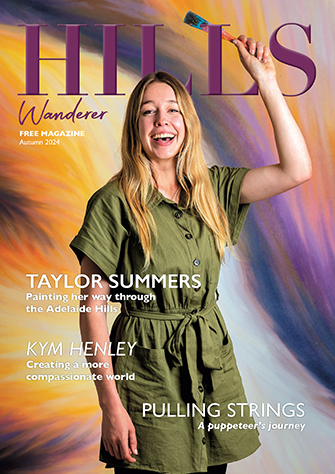Where did you grow up and how did your early life contribute to the path you’re now on?
I grew up in Adelaide with my mum, dad and sister.
My childhood memories are of horse riding, bush walking and the outdoors.
Nature has always played a huge part in my wellbeing.
How long have you been drawing and what drew you to art in the first place?
Like most artists I have been “creative” all my life. I had my first exhibition at 19 and then life happened and I pushed it aside.
Both my grandmothers were artists and my mother has also dabbled over the years, so I have always had support in my art pursuits.
Over the last 16 years I have really dedicated my time and effort to my art and then eight years ago I gave up my full-time job in the wine industry to create full time.
How would you describe your artistic style and what has influenced that style?
It would be considered contemporary, my work is all about the details, tiny details.
I am influenced by the world around me, whether it’s the patterns and designs in my mandalas or my botanical work.
I see patterns in everything.
The circle represents life, wholeness and the viewer is restricted to a single space creating calmness to my busy heavily detailed work.
Your winning entry to the Waterhouse Natural Science Art Prize featured all but two of the 758 endangered and critically endangered Australian plants. What was your inspiration for the piece?
My work is all based around the mandala.
I am drawn to the circle… In the beginning is the end and in the end is the beginning.
The circle represents life, wholeness and the viewer is restricted to a single space creating calmness to my busy heavily detailed work.
It was of particular importance for Endangered, the symbol of life and eternity against the vulnerability of these plants. With environmental issues we can sometimes feel disconnected like we are too small to make change, but with endangered plants this is a loss that is happening in our “backyards”, as individuals we feel we can make a difference.
Drawing all of these plants in one place makes the loss seem tangible, you are taken by the art, but then saddened by the picture.
How long did the piece take you and how did you go about researching for the work?

Including research the piece took me 400 hours.
The last 35 plants were difficult to find, I needed to reach out to botanists from around Australia as well as seed banks, Australian National Herbarium and Botanical Gardens.
How long have you lived in the Adelaide Hills and what has kept you in the region?
I have been in my current home in Bridgewater for 12 years, but, having grown up with horses, much of my childhood was spent in the Hills.
I love the sense of community and support the Hills offer, the space and quietness and the amazing walking tracks we have around us.
How do the Adelaide Hills help to inspire your art?
I love this question – the Hills inspire my art daily. Just two minutes down the road there is a large collection of native orchids, Belair also is home to quite a few.
My partner won’t walk with me any more because I’m forever stopping and taking photos of plants. Nature is always inspiring.
Raising awareness about conservation is a core part of your work. What do you believe we need to do as a nation to preserve our environment going forward?
Raising awareness about conservation is definitely a direction I’m heading in.
I think the relationship between art, science and the environment has never been so important.
Art is accessible, it has the ability to move us and to trigger emotions.
I think we have been led to believe we are too small to make a difference, to believe it is out of our control, but we can make small choices that can go on to make big differences.
I have just launched a purpose driven partnership with Fairhill Native Botanical Gardens in Queensland, together we will leverage my art to continue to spread the word about our endangered plants, create an endangered seed hub and actively propagate many of the endangered species over the next five years.




